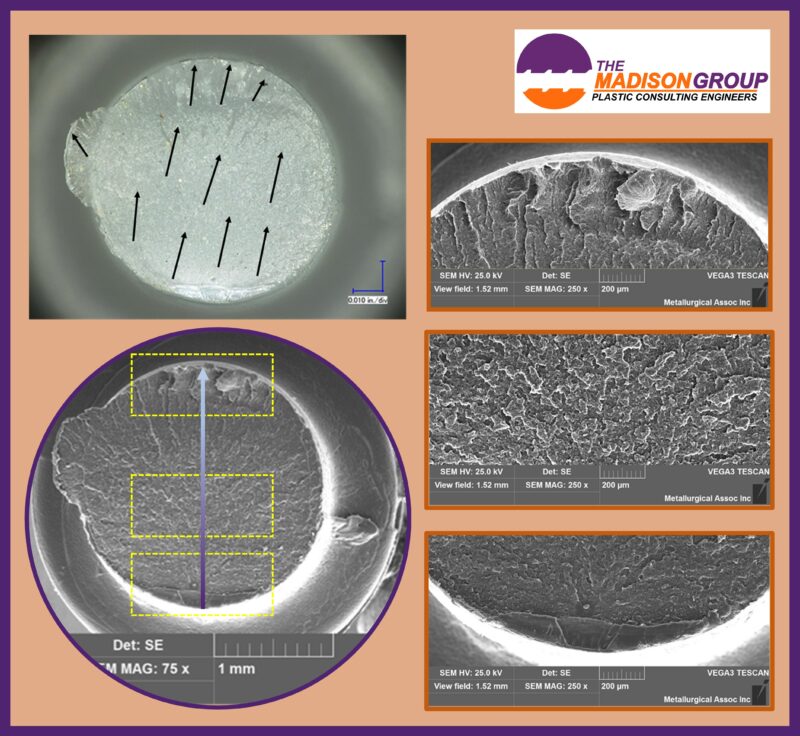I recently completed a failure analysis, and the fractography provided the key information on the failure mechanism and orientation of the applied stress. A component utilized in a mechanical meter cracked in service. The part had been injection molded from an unfilled polyacetal copolymer. Cracking occurred proximal to the base of a cylindrical post that extended from the base of the main body of the part.
The cracking was present as a catastrophic transverse fracture within the cylindrical design feature. The transverse nature of the cracking was characteristic of axial loading within the post. Such axial loading is often associated with the exertion of tensile or bending stresses.
The microscopic examination revealed three distinct zones of morphology on the post fracture surface. The crack features provided a clear indication of crack directionality. The scanning electron microscopic (SEM) inspection showed features that closely matched those from the microscopic examination.
The first fracture surface zone represented the crack origin. The cracking initiated along a relatively small section of the perimeter of the post at a design corner. This acted as a point of stress concentration, thereby focusing and multiplying any applied loads. The fracture surface within the origin displayed a relatively smooth texture, with no signs of micro ductility. The observed features were characteristic of brittle fracture. Multiple distinct crack origins were apparent, separated by ridge-like features corresponding to crack unions. Obvious signs of stretching were present within the unions. The fracture surface showed comparatively coarse features immediately surrounding the smooth origin.
The second fracture surface zone was the mid-fracture. This portion of the surface displayed a very different morphology compared with origin. This zone consisted of an overlapping morphology, indicative of micro ductility in polyacetal.
The third area on the fracture surface corresponded to the final fracture zone. The features were characteristic of rapid crack extension. A significant level of stretching and deformation was present.
The fractographic examination indicated that the polyacetal post cracked via a mechanical overload mechanism associated with bending stresses that exceeded the short-term strength of the material. The position of the cracking correlated to the location of highest stress in the bending loads.

For more information on fractography of cylindrical components, check out this post, Cracking is a Stress Relief Mechanism
